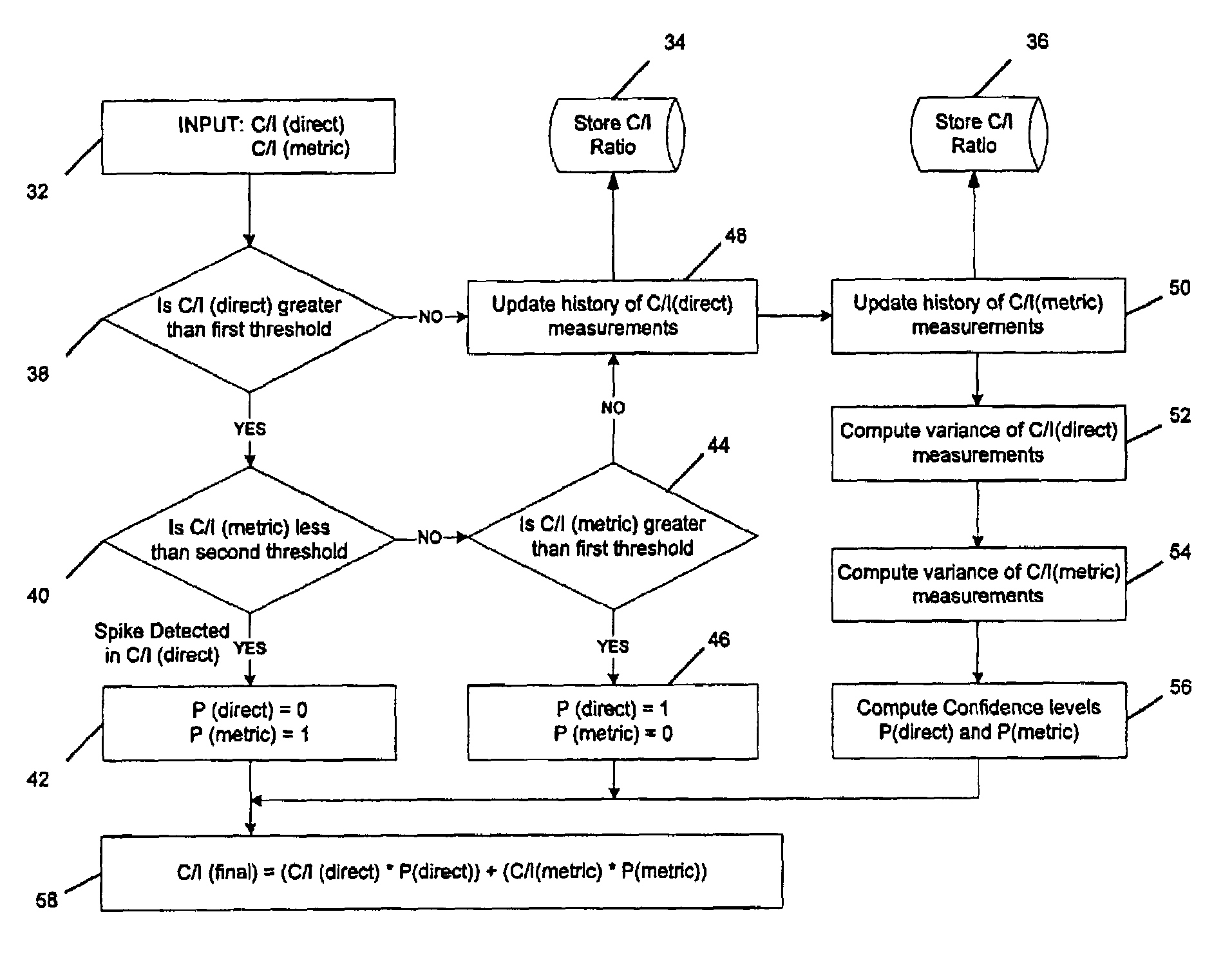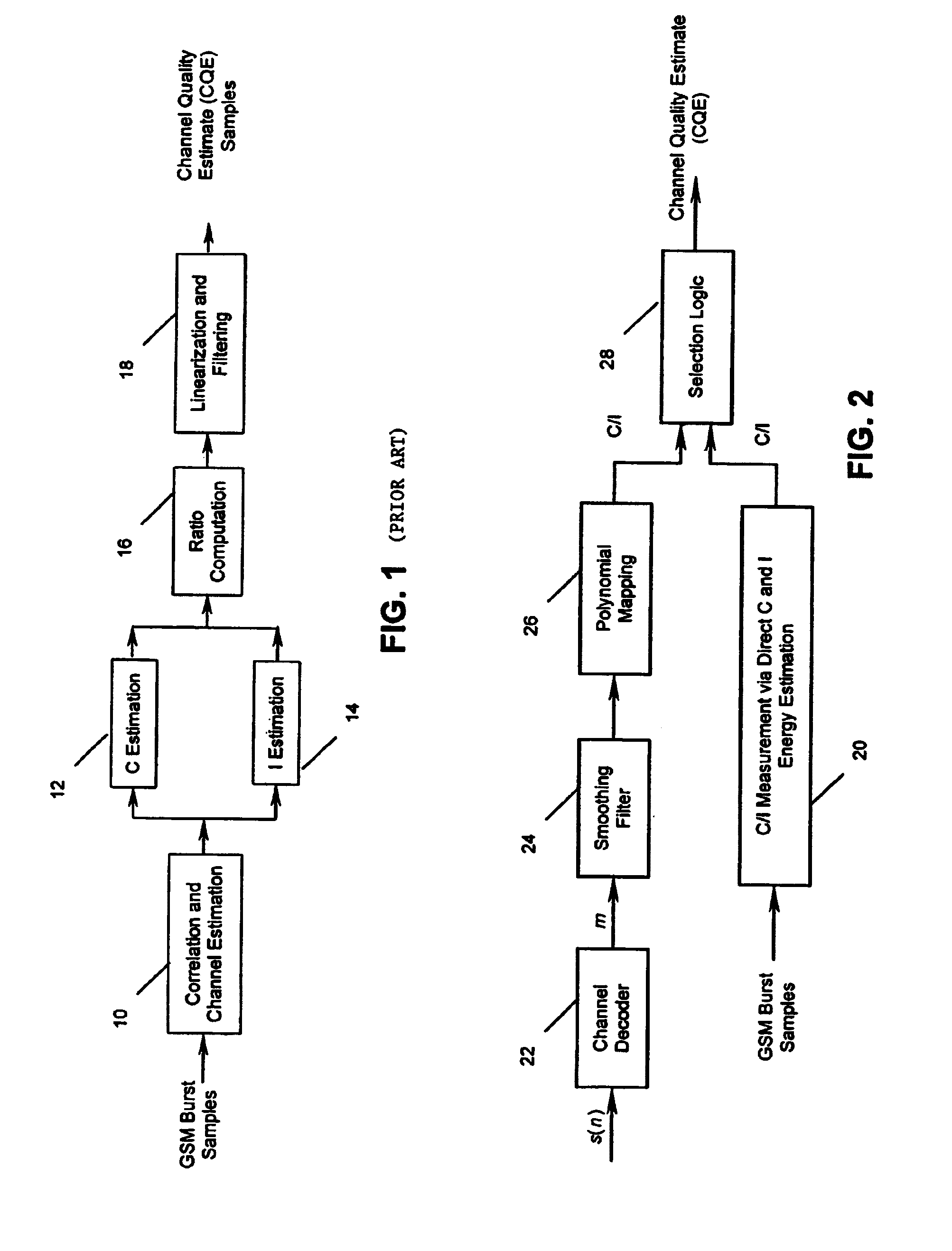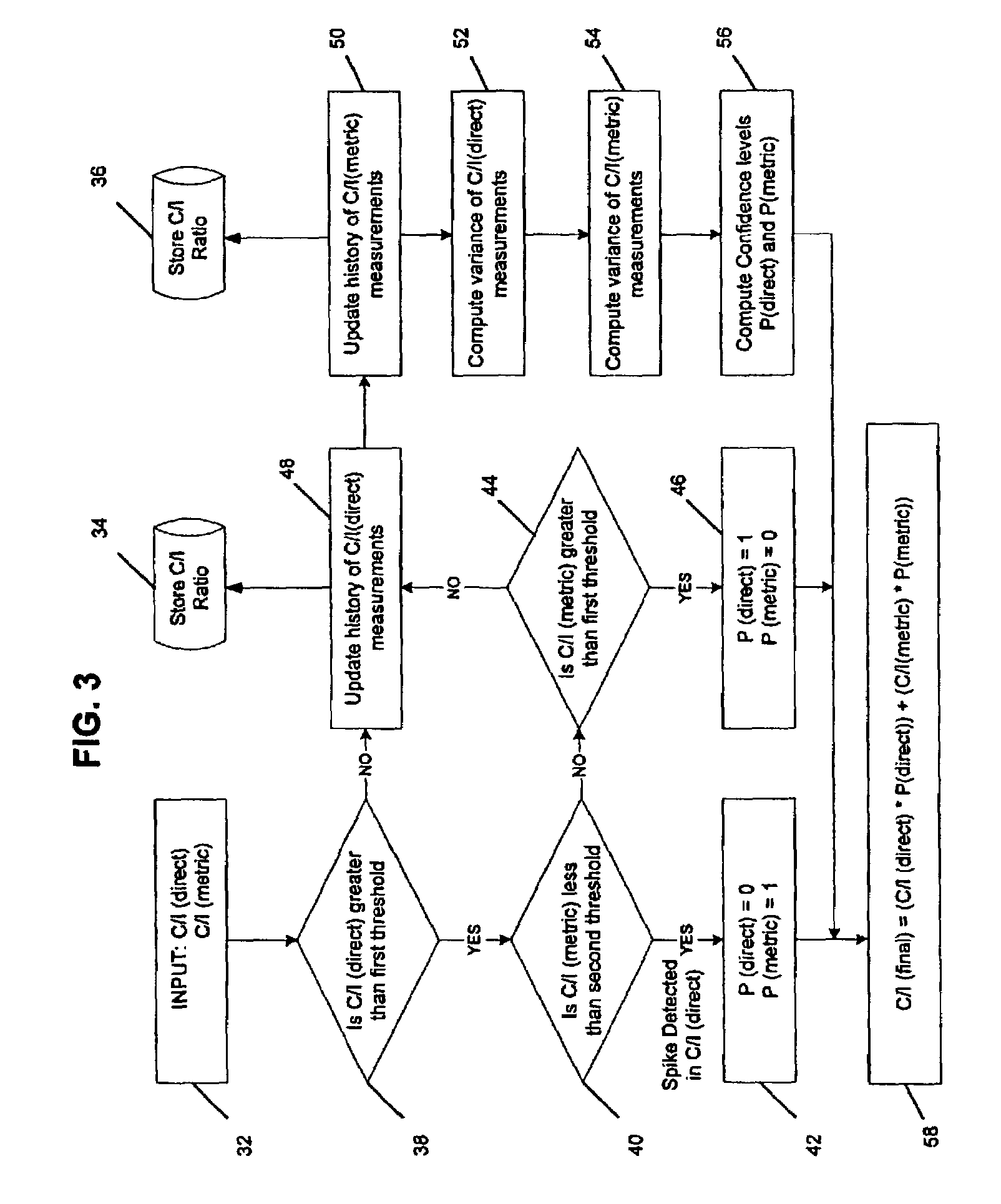Combining direct interference estimation and decoder metrics for improved measurement for AMR mode adaptation in GSM systems
a technology of direct interference estimation and decoder metrics, which is applied in the direction of amplitude demodulation, dc level restoring means or bias distort correction, and baseband system details, etc., can solve the problems of reducing the overall performance of channel utilization and voice quality in the mobile phone, affecting the reliability and accuracy of channel quality estimates, and avoiding false switching of amr vocoder rates
- Summary
- Abstract
- Description
- Claims
- Application Information
AI Technical Summary
Benefits of technology
Problems solved by technology
Method used
Image
Examples
Embodiment Construction
[0012]The adaptive multi-rate (AMR) speech codec is fundamentally different from fixed-rate speech codecs in that multiple speech rates are defined and the speech rate may be changed dynamically. For each speech rate, a channel coding scheme is defined and speech rate may be altered in order to match the channel coding to the link quality.
[0013]As an AMR enabled GSM mobile phone encounters poor channel conditions, e.g. at the edge of a cell or during a fade, the speech rate is reduced and the channel coding is increased. The reduced speech rate leads to a lower rate but still acceptable speech quality. This dynamic change is performed in a controlled manner such that the bit error rate (BER) into the speech decoder is always kept at acceptable levels to maintain overall good speech quality. With a fixed-rate speech codec under similar conditions, the BER into the speech decoder would quickly reach unacceptable levels leading to degraded speech quality out of the decoder. The active ...
PUM
 Login to View More
Login to View More Abstract
Description
Claims
Application Information
 Login to View More
Login to View More - R&D
- Intellectual Property
- Life Sciences
- Materials
- Tech Scout
- Unparalleled Data Quality
- Higher Quality Content
- 60% Fewer Hallucinations
Browse by: Latest US Patents, China's latest patents, Technical Efficacy Thesaurus, Application Domain, Technology Topic, Popular Technical Reports.
© 2025 PatSnap. All rights reserved.Legal|Privacy policy|Modern Slavery Act Transparency Statement|Sitemap|About US| Contact US: help@patsnap.com



